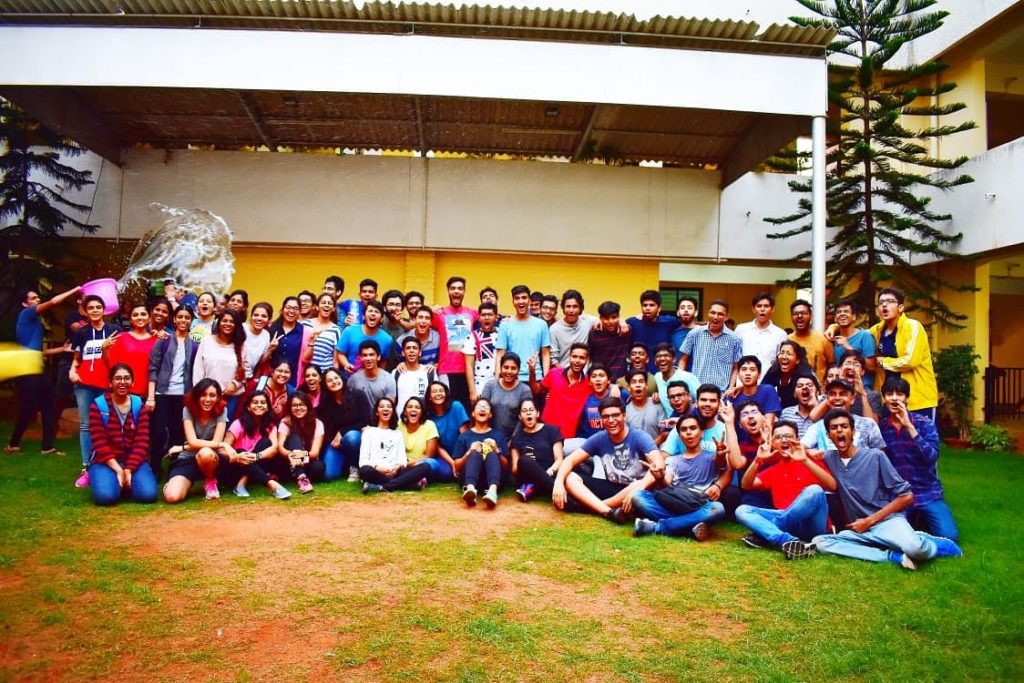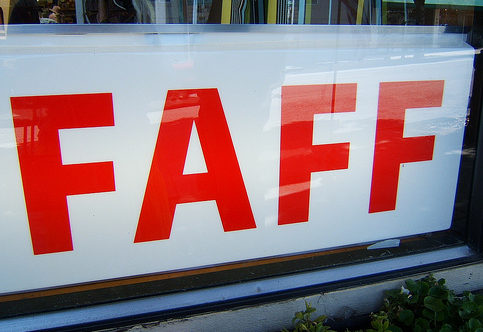This is the executive summary of Exploring the “Fault” Lines at NLSIU, a three part series on the student-admin relationship. It has been written by SayMadArthi, TooCoolForQuirk, Catalyst and StillWingingIt. The illustration is by Anonymous. You can find Part I discussing the problem of miscommunication here, Part II discussing the problems of mistrust, apathy and lack of inclusivity here, and Part III discussing the admin response to the Covid-19 pandemic here.
Introduction
This series (hereinafter, “Fault Lines”) was conceptualized in response to the relentless frustrations caused by the numerous clashes between the NLSIU student body and admin over the past year. It systematically and comprehensively analyses the points of disagreements and has identified four root causes – poor communication, lack of trust and empathy, problem of inclusivity and misaligned expectations. These are sought to be addressed using multiple structural changes explained in subsequent sections.
Part I: Chronicling the Communication Breakdown
Communicating (?) Well…
Conflicts between the administration and the student body can be attributed to poor communication. The absence of proper communication channels with the administration has often left the student body completely in the dark. Even when the admin does communicate with the student body, it does so either too late or through improper channels, which renders such communication futile. Similarly, the absence of a proper communication channel with student body representatives has contributed to a lack of transparency regarding SBA and SAC’s functioning with the administration.
Approachability
Unclear role division between various bodies and the absence of a responsive and efficient grievance redressal system has made the administration unapproachable, leaving students frustrated.
Representation by SBA/SAC
Representation by SAC and SBA has been lacking in terms of how student concerns are gauged and prioritized. The existing method of identifying student concerns is majoritarian and does not account for legitimate minority/individual concerns sufficiently. There is also a need to: a) expand the SBA, a 2-person body overburdened with representing the concerns of over 500 students; and/or b) expand the mandate of SAC, which is currently restricted to academic matters.
Proposed structural changes
The proposed changes are designed to ensure certainty, reduce confusion, and increase approachability. A set of directory Communication guidelines must be established for routine (stable, scheduled, unchanging communication like time tables) and extraordinary (deviation from notified rules, customary application of rules etc.) communication between the student body and admin bodies like the UGC and AAD. The latter must be cognizant of exceptions to the rule, mention a contact person to address grievances and be based on student consultation through open houses or representatives
Part II: Measuring Mistrust and Apathy
Mistrust:
Mistrust emerges as a consequence of insufficient and often, maligned communication. At NLS, mistrust prevails between students and admin, vice-versa and amongst students themselves. Mistrust from the admin towards students manifests in the form of suspicion whenever students make any requests for concessions/leniency. This makes students feel that their concerns are being belittled and relief is being blocked. The admin’s mistrust is based on a perception of students ‘scamming’ – which might be attributed to demands for universal solutions (like project extensions) even when only some students might be affected. Further, consequential measures are often undertaken in an opaque manner without any heed for student input – such as the introduction of the new moderation policy. This often causes students to impute bad faith to the admin and also ignore any small positive measures that are being undertaken.
Mistrust amongst students is perpetuated due to the undertones of sexism, casteism, queerphobia, ableism, and violence which lie beneath the liberal, accepting tones on the surface. Conversation is often dominated by privileged or vocal groups and minority concerns are ignored even in forums like GBMs, worsening the underlying tension within students.
Apathy:
The student community has used spaces such as MHSGs Support Group sessions to foster empathy (which is a skill made rare by the pandemic). However, student-admin/student-faculty interaction remains extremely impersonal. The admin’s faculty mentorship programme received negative reviews from students with students describing professors as unequipped, mechanical and even uncaring of issues discussed.
The student body has also displayed a lack of empathy towards the admin staff on several occasions, ignoring the fact that they have been impacted by COVID-19 too. Further, the students’ attempt to understand specific circumstances of their peers which made it tougher to stick to the academic schedule were lackadaisical at best – most often, culminating in a demand for a general concession.
The move from apathy to trust and solidarity needs honest student-student-admin conversation about how to reduce the burden for all stakeholders.
Inclusivity:
A lack of inclusivity at NLS has been most evident during the pandemic. Homogenous composition of SAC and SBA, which is the result of a plurality voting system, has resulted in skewed representation of student interests. Further, inclusivity at NLS has largely been led by student collectives like the SPAC, Queer Alliance, Disability Alliance etc. However, this is insufficient as these collectives are not institutional bodies, do not receive college funding, and depend on student interests. The administration needs to share some of the burden in making NLS more inclusive.
Proposed Structural Changes
Both students and admin lose out due to mistrust and apathy within them. Seven measures are suggested to alleviate these issues. A decision on individual or group relaxation to a rule must be based on whether more or less than 50% of the student body has indicated the need for the same through a form. Rejections of such relexations by the admin must be reasoned and explained, especially when student suggestions are rejected. Approval ratings and feedback forms must be used by the SBA and SAC to evaluate (and convey to admin) student response to admin measures. A grievance redressal mechanism administered by the SWO/other independent committee must be formed to accept anonymous complaints against admin members. Faculty must be sensitized on issues such as sexism, sexual harassment, LGBTQI+ acceptance, caste, mental health etc. Spaces akin to MHSG, game nights and student meetings must be created and utilized as safe spaces for free-flowing conversation. Non-competitive activities must be promoted to increase community building.
Part III – Coping with COVID: On the Brink of Collapse
Trust between the student body and admin broke down due to resistance of the admin towards any concessions for students worst impacted by the second wave of COVID-19. The six-day project extension, while useful, did not improve the situation for students who were sick themselves, caring for others or had faced bereavement – and further extensions were promised but never provided.
The more relaxed exam schedule, proposed in collaboration with the UGC, was rejected in favour of one which forced students to write consecutive exams, even two exams a day. This response made students mistrust the admin further.
The admin has had litigation paranoia, believing that a single concession will be used by students against the admin as a ‘legitimate expectation’ before a court. This is misguided due to the miniscule minority of students suing the university, the court’s rulings in favour of the students, the students’ legal right to approach the court, and the fact that no student would choose the court as their first port of call due to its impacts on finances, mental health and possible admin backlash.
A worry that students will resort to litigation has caused admin’s empathy for students to vanish and has reduced communication to template emails phrased in an overly formal, unempathetic and ignorant tone which fail to acknowledge the gravity of troubles faced by the students. Categorization of litigation as a ‘strategy’ has further exacerbated the disconnect between students and admin.
Good Faith:
In order to get out of this vicious cycle of apathy and mistrust, we need acts of good faith from both sides. The student body has taken the first step through its apology email which acknowledges that we need to move forward. Before moving forward, however, we must keep in mind two things: first, our expectations of this administration must not stem from our experiences with the previous administration but rather from the legitimate claim that we have as stakeholders of this institution. Second, we must not completely disregard many of the positives changes that this administration has brought in place.
The new academic year is an opportunity to start afresh and move towards a more functional relationship with the administration. To achieve this, change and a display of intention to improve the relationship must exist from both ends.




